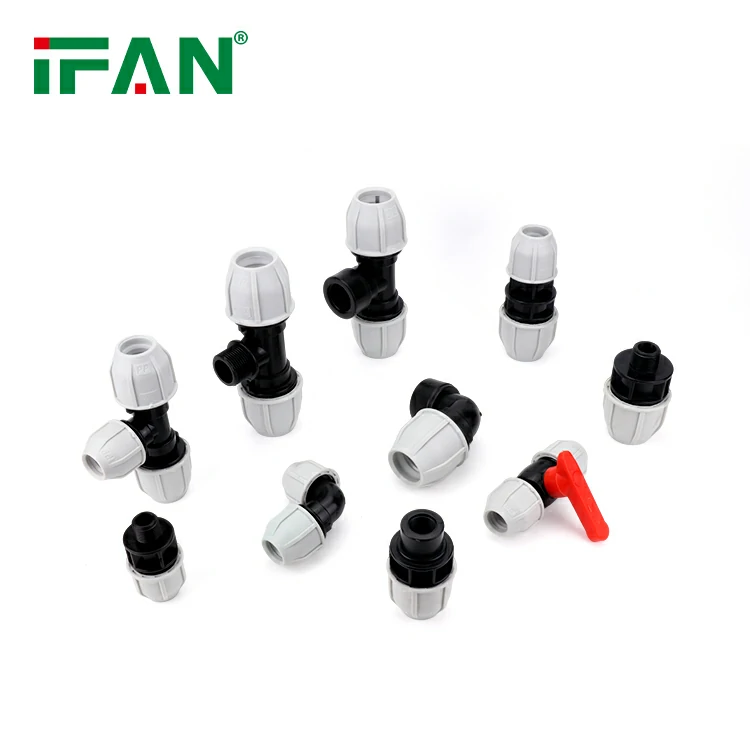Introduction to HDPE Pipe Fitting and Temperature
HDPE pipe fittings are widely used in plumbing, irrigation, and industrial piping systems.
Temperature plays a crucial role in their performance and installation.
The right temperature is essential for proper joining and long-term durability.
Improper temperature can lead to weak joints or damage to the fitting.
Understanding temperature requirements helps ensure the system’s safety and reliability.
This article explores the temperature ranges needed for HDPE pipe fitting installation.
It also explains how temperature affects material properties and joint strength.
Choosing correct temperatures optimizes fitting lifespan and system integrity.
HDPE Material Properties and Temperature Sensitivity
HDPE, or high-density polyethylene, is a thermoplastic polymer used for pipe fittings.
It softens when heated and hardens when cooled, enabling fusion joining.
The melting point of HDPE typically ranges between 120°C and 140°C.
However, fusion temperatures are usually lower to avoid material degradation.
At temperatures below 0°C, HDPE becomes stiffer and less flexible.
Excessive heat above 140°C can cause discoloration and weaken the pipe fitting.
Understanding these thermal characteristics guides proper temperature control during installation.
Temperature sensitivity is key to preventing joint failure in HDPE pipe fittings.
Recommended Temperature Range for Fusion Welding
Fusion welding is the common method to join HDPE pipe fittings.
The welding temperature typically ranges between 200°C and 260°C depending on the method.
Butt fusion usually uses temperatures around 220°C to 250°C for optimal melting.
Electrofusion fittings use a built-in heater with controlled temperature for consistent fusion.
Maintaining correct temperature prevents underheating or overheating during welding.
Underheating causes weak joints; overheating may deform or burn the HDPE material.
Proper training and equipment calibration ensure fitting surfaces reach the right temperature.
Following manufacturer guidelines helps maintain the ideal temperature range for welding.
Ambient Temperature Impact on Installation
Ambient temperature influences HDPE pipe fitting handling and welding quality.
Cold weather below 5°C can make HDPE fittings brittle and harder to fuse.
In cold environments, preheating or warming the fitting surface may be necessary.
Excessive heat above 40°C can cause fitting surfaces to soften prematurely.
Installers must monitor environmental temperature before and during installation.
Temperature adjustments ensure the fusion process achieves strong, leak-proof joints.
Storage of fittings should also consider temperature to prevent material damage.
Proper temperature control increases success rates in various weather conditions.

Temperature for Different HDPE Grades
Different HDPE grades such as PE63, PE80, and PE100 have varying temperature tolerances.
PE100, the highest grade, has better resistance to high temperatures and pressures.
The fusion temperature range for PE80 and PE100 fittings overlaps but varies slightly.
PE63 may require lower fusion temperatures due to lower thermal stability.
Manufacturers specify exact temperature settings for each grade during installation.
Correct temperature adherence ensures fittings retain strength and durability post-welding.
Selecting the right grade fitting and temperature improves system reliability.
Ignoring temperature guidelines can result in joint failure or premature aging.
Temperature Effects During Service Life
HDPE pipe fittings must withstand operational temperatures without deformation or failure.
Standard working temperatures for HDPE pipes and fittings range from -40°C to 60°C.
Continuous exposure to temperatures above 60°C may degrade material properties.
High-temperature water or fluids may require specially rated HDPE fittings.
Thermal expansion due to temperature changes affects fitting joint integrity.
Design must accommodate temperature variations to prevent leaks and mechanical stress.
Proper installation temperature helps fittings maintain service life under thermal cycling.
Consult technical data sheets for temperature limits of specific HDPE pipe fittings.
Temperature Control Techniques During Installation
Accurate temperature control is vital for successful HDPE pipe fitting fusion.
Specialized fusion machines regulate heating plate temperature precisely.
Electrofusion units automatically control heating time and temperature for fittings.
Thermocouples and infrared sensors help monitor surface temperature in real-time.
Maintaining clean, dry surfaces improves heat transfer and joint quality.
Operator training ensures temperature adjustments based on ambient and material conditions.
Using recommended heating parameters minimizes joint defects and ensures durability.
Temperature control is a critical factor in achieving strong, long-lasting pipe connections.
Conclusion: Best Practices for Temperature Management
Proper temperature management ensures optimal performance of HDPE pipe fittings.
Follow manufacturer guidelines for fusion temperature and ambient conditions.
Use calibrated equipment to maintain consistent heating during welding.
Consider HDPE grade, ambient temperature, and service conditions in planning.
Preheat or cool fittings as necessary to match installation environment.
Monitor temperatures carefully to avoid underheating or overheating joints.
Well-controlled temperature during installation guarantees safe, reliable pipe systems.
Temperature awareness is essential for maximizing HDPE pipe fitting lifespan and safety.

